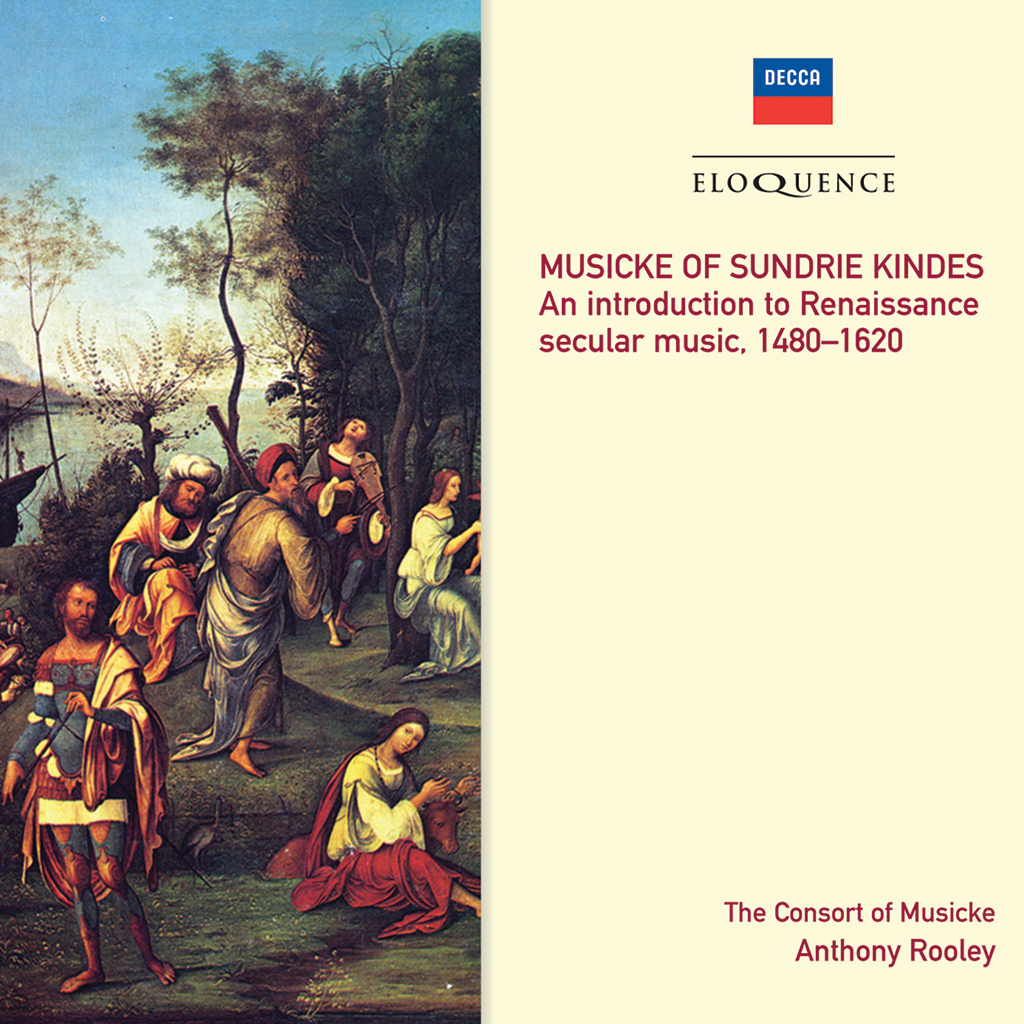
Renaissance secular music between 1480 and 1620 is large in quantity, high in quality, rich in colour, diverse in form and very different in content from a similar time-span of any later period with which we may be more familiar. This set of four compact discs provides a comprehensive survey of sixteenth-century secular music. Composers include not only the accepted masters of the Renaissance such as Josquin, Lasso, Marenzio, Obrecht, Isaac, Sermisy, Janequin, Gesualdo, Gabrieli, Monteverdi and Gibbons, but also many of their lesser known contemporaries. This seminal recording – offering nearly 100 tracks over four hours – receives its first release on CD. The presentation is eight-fold and the eight topics are interdependent but recognisably individual. Taken together, they cover secular music in a fairly comprehensive way for the purpose of an introduction. In addition to Anthony Rooley’s original note for the LP set (reproduced here), he has contributed a new introduction for this CD release. All texts and translations are included, making this a sumptuous offering.
CD 1
Ars Perfecta
The Fruits of Love
CD 2
Les Cris de Paris
Fa La Li Le La
CD 3
Quodlibet: Germany/Spain
Per Cantare e Sonare
CD 4
The Merry Dumps
The Wind of Change
Emma Kirkby, soprano
John York Skinner, countertenor
Kevin Smith, countertenor
Martyn Hill, tenor
Paul Elliot, tenor
David Thomas, bass
Andrew Parrott, vocal conductor
The Consort of Musicke
FIRST RELEASE ON CD
Executive Producer: Raymond Ware
Recording Producer: Peter Wadland
Balance Engineer: Philip Wade
Recording Locations: Decca Studios, West Hampstead, London, UK, December 1973, January, March 1974; Victoria Cottage, UK, May 1975
‘The first thing to say is that it is an exceptionally interesting selection of music dating from the later fifteenth century to somewhere about 1630. It is restricted mainly to chamber music, although there are one or two items which seem to step outside this sphere. It covers virtually the whole European spectrum, taking in work of the great Netherlanders who dominated several countries in the early part of the period; the minor Italian composers of frottole who resisted this main force; the French composers of the popular polyphonic chansons which broke this stylistic monopoly; German and Spanish songs; madrigals from the major Italian composers who were the ‘new’ generation, finally dispelling the Netherlanders; the English, partly in love with, partly resisting this manner; and finally the music of the early seventeenth century, with its change of direction towards soloistic vocal and instrumental genres. Add dances and other popular music, and there would seem to be little left of the period which is not represented in some way. But do not believe that this is simply an academic approach (though the set will prove extremely useful to schools and all places where they study); there is so much unexplored – and good – music in all these areas that there is none of that paddingout which so often results from an attempt at being comprehensive. … This is an interesting and important anthology, full of beautiful music, never less than efficiently and often very well performed, recorded cleanly yet with sufficient atmosphere. The accompanying booklet provides all the essential material, words and translations, information about the sources and a note which shows how Mr Rooley’s approach to the music is, if unusual, well thought-out. May this venture be the first of many, for there is so much, so very much still to be done.’ Gramophone
